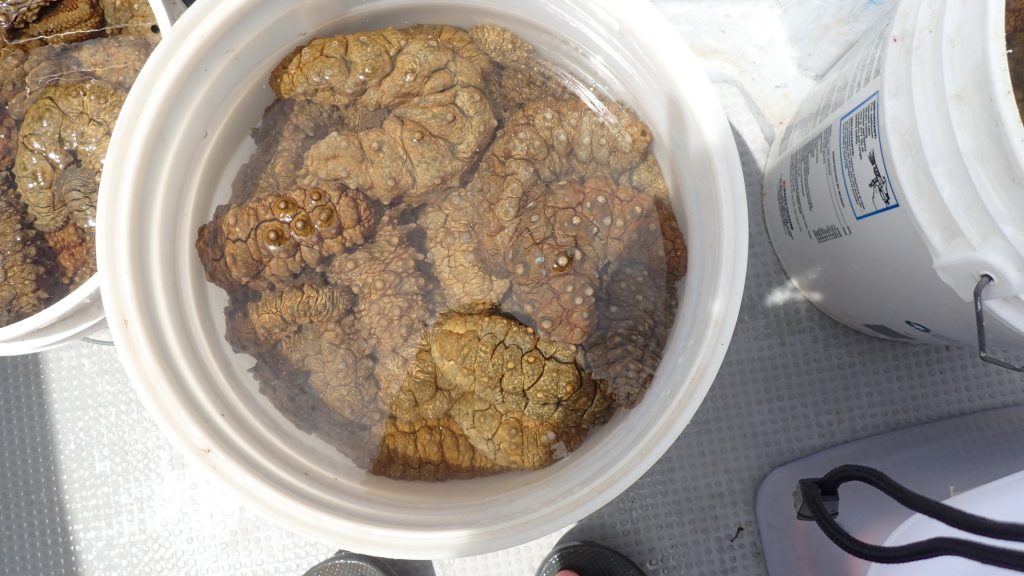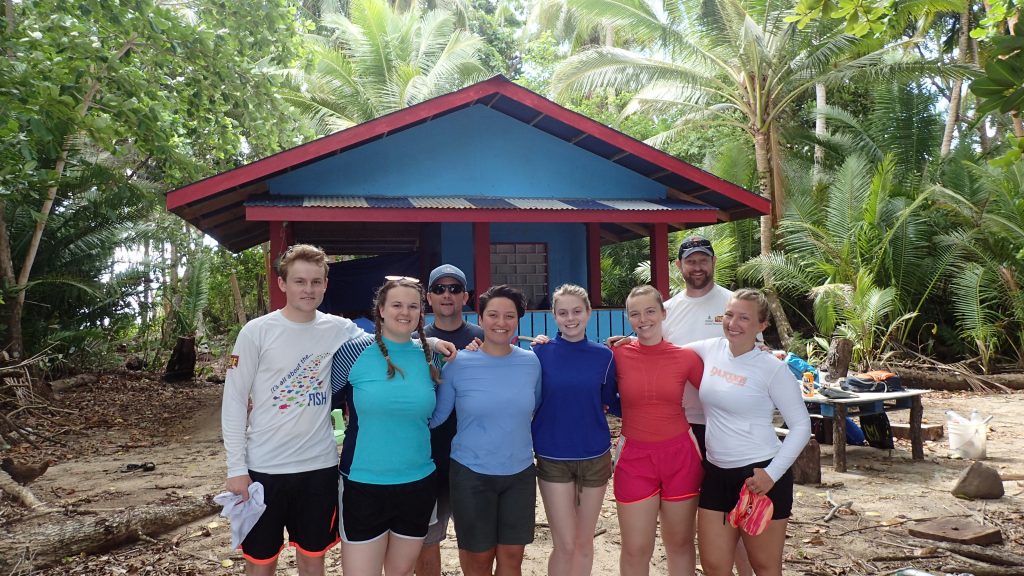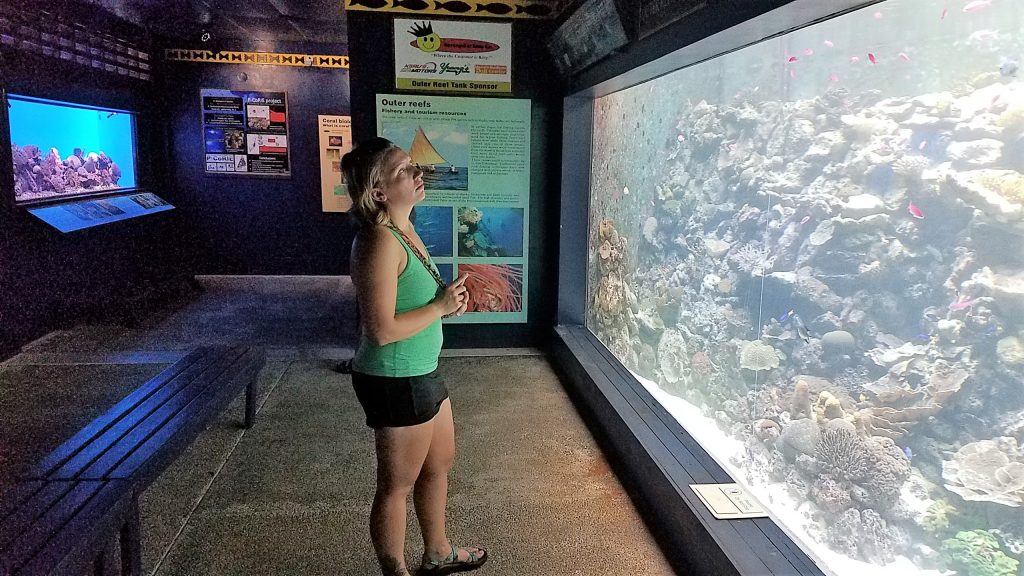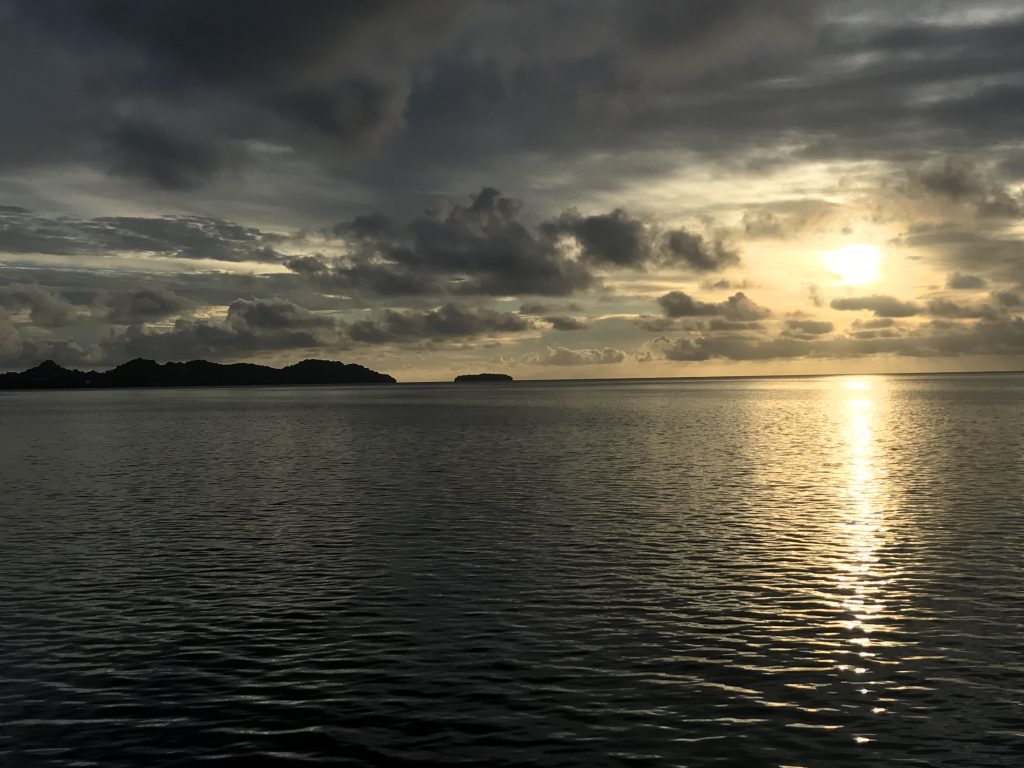
Our second day at The Ebiil Society we had plans to go to a nearby island and learn about various animals and archaeological history. We met early to discuss and learn about the basics of calculating population density before departing from the local port to the Island of Ngerkeklau to perform transects on the eastern side of the island to determine the population densities of the Curryfish (Ngimes) and Lollyfish (Chouas). After 12 transects we calculated the results and determined there are approximately 0.85 Curryfish (Ngimes) per square meter and 0.12 Lollyfish (Chouas) per square meter. After the transects we took a short break for lunch.

Following lunch we alongside Palau Community College Students and the Pacific Academic Institute for Research had the chance to learn the methods of turtle monitoring and megapode nesting by Joshua Eberdong and Ann Singeo of The Ebiil Society.

We continued to hike along the Island and began to wind our way inland on trails made by the first inhabitants 800 years ago. We found old pieces of pottery and tools that they used as well as coral walls they had built.

The trails led around the island back to the summer house that we used as our home base for the day, we regrouped and packed up before getting back in the water to collect Curryfish for tagging and transport.


The group headed to the western side of the island and gathered Curryfish before departing back to Ollei for tagging and outplant near the local dock.

We tagged the Curryfish at the local dock to determine populations estimates and how long they stay in a certain location. Following the tagging of the Curryfish we took them to a set location just south of the local port, with that we came across the carcass of a sperm whale.

After we finished putting the Curryfish back we returned to The Ebiil Society to find our dinner being processed. Sam, Ann’s husband had caught a Yellow Fin Tuna and was cutting it into steaks. It made a delicious fish soup and tuna steaks. After a long yet successful day and a wonderful dinner we are looking forward to tomorrows adventure learning about fisheries in Palau.
Tate Scarpaci (OSU)
Kobe Malsol Moses (PCC)









